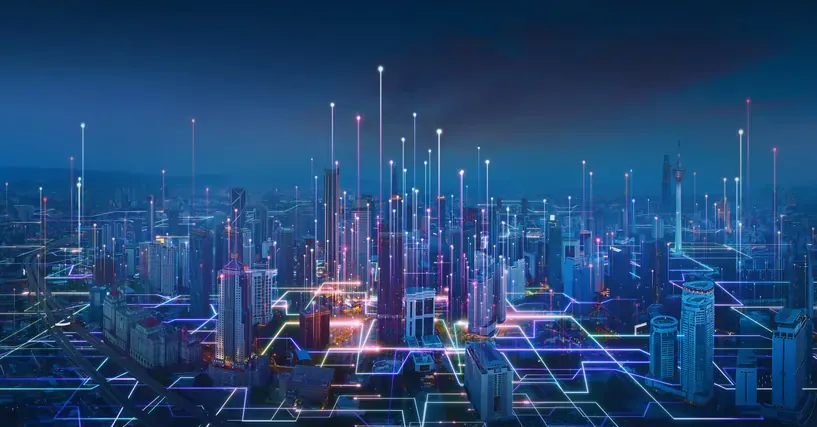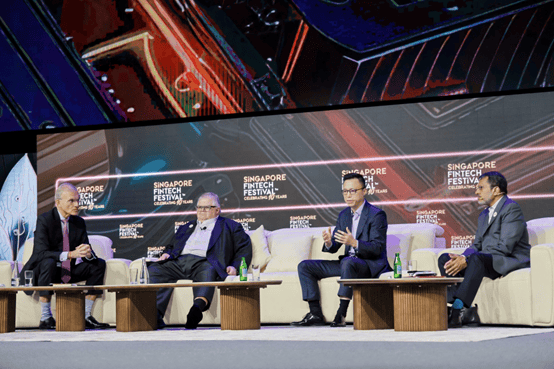
Three Real-World Lessons for Today from Yesterday‘s Virtual Reality Successes
Past was Prologue with Tech Pioneer Richard Boyd and his Work with BP
One of the foundational pillars of Virtual Reality is that it can provide an immersive experience that is interactive, engaging, and allows the user to learn by doing. Fully immersive VR provides realistic and incredibly believable landscapes, and can be tailored to an ever-widening array of industries, from design and architecture to healthcare, education and training, and retail – saving time, travel and costs while creating a more profound learning experience for users.
These are among the key takeaways from Richard Boyd. He first wrote about the Metaverse in 1995 and was a key player among tech pioneers back in 2006 in The Metaverse Roundup.
Boyd is a serial entrepreneur, tech consultant, celebrated author and sought-after speaker on virtual worlds, computer gaming, machine learning and human/computer interfaces. The co-founder and CEO of artificial intelligence and machine learning company Tanjo Inc., and the co-founder and CEO of Ultisim Inc., a simulation learning company that utilizes gaming technology and AI, Boyd and his team have made great strides across a wide variety of industries including energy, healthcare, defense, education and motion pictures.
He has been instrumental in creating several pioneering computer gaming companies including Red Storm Entertainment with author Tom Clancy, iRock Entertainment with Ozzy Osbourne, and Timeline Computer Entertainment with author Michael Crichton. Richard has also used his expertise in 3D simulation and animation to contribute to the film industry in support of movie directors James Cameron, Brian dePalma, Peter Weir, and Sydney Pollack.
In 2007, he began collaborating with BP on a variety of what were then called virtual worlds designed to augment and optimize employee training, team-building, and communication with the C-Suite. His partner in digital crime was BP executive Joe Little,the digital entrepreneur in residence at the University of Stirling and senior adviser to the chief futurist at Deloitte.
Back in the day, they primarily focused on recreating dangerous or expensive environments that were difficult to access and sets of activities where people could learn how to respond accurately in a virtual setting.
The essential question: How to bring virtual worlds to the energy industry?
One of the first BP simulations was centered on what would happen if Chicago was struck by an earthquake. Using representations of those environments, how could BP support its staff and help to rebuild that community? The project was an enormous success, with participating BP engineers and staffers agreeing that this form of collaboration is the way forward.
A second project: global employees would frequently travel to a U.S.-based training facility centered on its front-line BP station and am/pm store employees. In lieu of this in-person gathering, Boyd and his team built an interactive 3D retail world with impressive results. With greatly reduced travel costs, 77% of employees were trained faster; and retention rates improved substantially – 100% compared to 40% for an in-person control group.
Yet another project dealt with training staffers through procedures and policies in the company’s natural gas fields in Trinidad and Tobago. It included a safety walkthrough, a risk assessment, the actual isolation within the plant itself, and then a restoration of operations thereafter.
Quickly following was a project important to then-CEO Lord Browne. He held an annual in-person event geared toward improving relationships between the senior leaders and younger staffers. One of the major downsides was the cost, an annual expenditure of $5 million for each event. Secondly, people weren’t showing up because it was a timeout from their business. Plus, the company received feedback from past participants that the format for the event – four days of PowerPoint presentations – was not the most stimulating way to receive the information.
In an attempt to resolve these challenges, the company did a trial experiment. They took what had been a four-day event and transformed it into a four-week virtual get-together. In order to make it interesting, exciting and compelling they created an interactive challenge, where participants would be on the leadership team of a company in 2031. It would be their responsibility to explore a fictional but realistic protected territory called Fordadland, to explore its potential for oil and gas.
The goal for each participant was to establish protocols on the opening up of this new land and to find solutions to the various challenges that would arise. Bots were placed in the virtual world to represent competitors, foreign powers with a vested interest, and NGOs such as Greenpeace. Participant executives could share information about their respective functions, discuss the best ways to solve challenges, and present investment strategies.
Of the 15 groups around the globe who participated in the project, 13 logged in every day to participate. They discussed what they learned from the daily briefing, what they’d discovered from the bots, and how they were going to approach their presentation. At the end of the simulation, the executives described the work of their young cohorts as stunning. They clearly absorbed all the content, conducted thorough research offline, and presented thoughtful and fantastic ideas.
In the meantime, Duke University and MIT Sloan were observing this entire process. MIT’s report centered on the soft skills acquired and fostered by VR, particularly in communication skills.
The final report centered on the company’s new CIO and Group Vice President, Dana Deasy (who went on to serve as the U.S. Department of Defense Chief Information Officer). He previously scheduled in-person sessions – usually two or three grades below him – to gain insight and intelligence on what the workforce was thinking and feeling, and a virtual counterpart was created. The scope of interactivity and the depth of questions surprised him. They quickly learned from the junior staffers in that session that it was much easier to talk to Deasy as an avatar than if he was in the room.
The creation of the Deasy avatar de-mystified the CIO – making the conversations easier, more comfortable, and more honest. The mask of an avatar opened up communication possibilities. The VR avatar was more approachable and it had a leveling, democratizing effect on that group. Deasy approved of the concept and pushed his leadership team to start using the VR environment more.
ABC Takeaways from BP Relevant to Today
- Give people something to do. Combine simulation with information transfer, socialization, and with community into one event.
- Make sure that technology barriers are low or non-existent. Expensive and cumbersome VR headsets create too much friction for collaboration in virtual worlds.
- Well-designed environments that lower roadblocks to participation are paramount.
English wit James Boswell famously said when seeing a dog’s walking on his hind legs…it’s not done well; but you are surprised to find it done at all.”
In the early, pioneering days of Virtual Reality, the very idea that this new and exciting form of interaction was paramount. But for those looking to optimize and make a solid business case for its integration into a company’s communication, training, and team-building, it’s not so much that we can make this dog walk (technology has done that) but that we need to make sure that there is purpose and profit, by design, in how it gets to its final destination.
There are plenty of industry veterans out there. These Old Dogs can teach the newcomers a host of new tricks.


